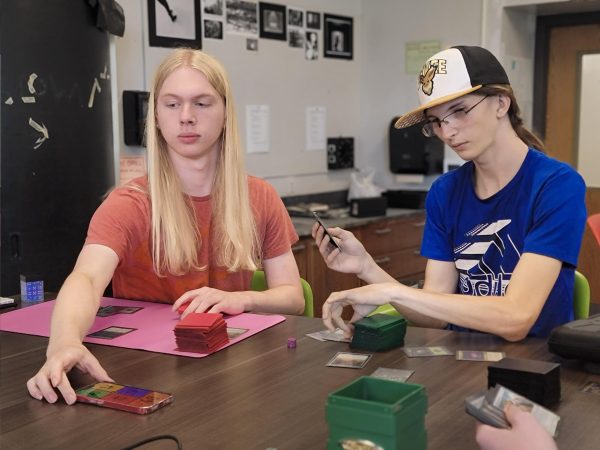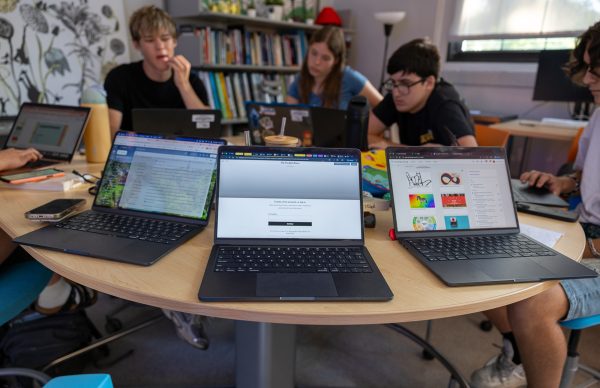Every year, Courtney Kiley gets a batch of 200 Chinook Salmon eggs to raise with the help of her ‘Salmon Apprentice,’ and the Ecology club. Kiley does this through a program called “Salmon in the Classroom,” which is run by the Department of Natural Resources. This year, a genetic mutation appeared that that was not present in any of Kiley’s previous tanks. On December 12, 2012, the two headed fish Dexter and Baxter was first spotted by sophomore Sophia Camp.The Salmon in the Classroom program gives teachers a chance to spend almost a full school year raising Chinook Salmon to then release into a local watershed that feeds into one of the Great Lakes. “We stock salmon into the Great Lakes because back in the ‘70s, when the invasive species Alwives came in through the Wellend Canal, the Alwives didn’t have a predator in the Great Lakes, so the populations went crazy, and they would have massive die offs… The Department of Natural Resources decided to stock salmon, which are an invasive species, in the Great Lakes as a way to control the Alwives population, because they eat Alwives,” explained Kiley. “Now, even though the Alwives population aren’t a super huge problem anymore, a lot of the Michigan shoreline relies on salmon fishing industries for economic reasons.”Patricia Nease was Kiley’s first Salmon Apprentice. The responsibilities of the Salmon Apprentice include coming in around two times a week to do things such as check the pH, ammonia, nitrite and nitrate levels in the tank, and occasionally change the water. “It’s interesting how we’re actually putting invasive species into the Great Lakes, but it’s cool we can do something that’s actually good for the economy and somewhat the environment,” said Nease.After high school, Nease plans on going into a fish, wildlife and conservation biology program. “Being a Salmon Apprentice gave me an idea of what I wanted to do,” said Nease.
This year, in addition to the Salmon Apprentice learning about stocking salmon, the Ecology Club is planning on expanding their knowledge to younger students in another school. “We’re trying to start a program where we’re teaching 5th graders about the Salmon in the Classroom program,” explained Nease.
This is Kiley’s third year in the program, and although she has had fish with mutations in the past, such as a fish born with no eyes and a fish born with a broken vertebrae, Dexter and Baxter is her first fish with a two headed mutation. “I’ve heard of other teaches in the area having whole tanks of two headed fish… and I’ve always wanted one,” said Kiley.
Although this mutation is fascinating to Kiley, it will also accelerate Dexter and Baxter’s death. “The fish will eventually die. If it were living in the wild, it wouldn’t be able to swim away from predators, because it’s a really bad swimmer. Also it can’t find food, and that’s the same in the tank, it won’t be able to compete with the other fish for food. Sometimes I’ve seen some of these salmon eat other ones, so some of its brothers and sisters may try to eat it,” said Kiley.
Although Dexter and Baxter’s mutation is interesting, there is a high probability of an early death. As Nease commented: “I think it’s really cool that we have a two headed fish, but it’s also sad that mutations happen.” Thus, what is fascinating to us is fatal to him.









